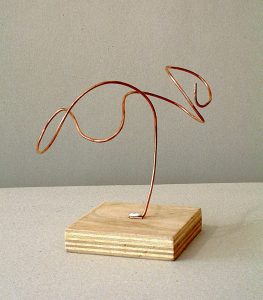
Introduction
Frida Kahlo, who regarded as one of Mexico’s best artists, was born on July 6, 1907, in Coyocoan, Mexico City. She was raised in the family’s residence, which came to be known as the Blue House or Casa Azul. Her father is a photographer and a descendent of the Germans. He emigrated to Mexico, where he fell in love with and wed Matilde, her mother. Her mother is a mix of Spanish and Indigenous descent. Two of Frida Kahlo’s sisters are older than her, while one is younger.
Early Life
Throughout her childhood, Frida Kahlo was prone to illness. At age 6, she was diagnosed with polio and was bedridden for nine months. Her right leg and foot became noticeably thinner than her left due to this illness. After she recovered from polio, her right leg caused her to limp. Due to that reason, she would wear long skirts all the time to cover and hide it from the public. Hence, her father urged her to participate in a variety of sports hoping it would aid her recovery. She engaged in many sports, including swimming, wrestling, and other activities that were extremely uncommon for a girl at the time being. Over the course of her life, she has maintained a close bond with her father.
Love Encounter
In the year 1922, Frida Kahlo studied in Mexico City’s illustrious National Preparatory School. There were only 35 female students enrolled in that school, and she quickly gained fame for her boldness and fearlessness. She had her first encounter with renowned Mexican muralist Diego Rivera at this institution. On the premises of the school, Rivera was constructing a mural at the time called “The Creation”. Frida frequently watched it and once told a friend she would marry him.
The Accident
The following year (1922), Kahlo joined a group of college students who held comparable political and intellectual ideals. Alejandro Gomez Arias, the boss, captured her heart. The fatal event occurred on a September afternoon when she was on the bus with Gomez Arias. Frida Kahlo suffered serious injuries when the bus hit a trolley. She was stabbed in the hip by a steel railing. She was severely hurt in this accident, both physically and medically, and now has a shattered spine and pelvis.
A New Start
She required several weeks of hospitalisation at the Red Cross Hospital in Mexico City due to her severe injuries. She then went back home to continue her rehabilitation. For three months, she had to wear a full-body cast. She began painting to pass the time and ease the agony, and the following year she completed her first self-portrait. “I paint myself since I am often alone and I am the subject I know best,” stated Frida Kahlo once. Her parents supported her artistic endeavours and had a unique easel created for her so that she could paint while in bed. She was also given paint boxes and brushes.
Kahlo’s paintings in 1932 began to incorporate more surrealistic and realistic elements. In the 1932 painting Henry Ford Hospital, Frida Kahlo depicted herself lying on a hospital bed naked while being surrounded by a few floating objects, including a foetus, a flower, a pelvis, and a snail, all of which were connected by veins. She created this artwork as an outlet for the emotions she felt following her second miscarriage. Like her other self-portraits, this one is extremely personal.
Frida Kahlo became a friend of Andre Breton in 1938, one of the primary figures of the Surrealism movement. She never considered herself a Surrealist until Breton told her she was one. She wrote that her paintings are the frankest expression of herself, and that her subjects were her sensations, states of mind, and reactions to life.
Late stages of her life
In the 1944 painting The Broken Column, Frida Kahlo shows herself stripped naked and divided down the middle. She has nails all over her body and a medical brace around her broken spine. To protect her back spine, she underwent a few surgeries and was required to wear specialised corsets. She tried getting medical help for her persistent agony, but nothing helped.
In 1950, Frida Kahlo’s health deteriorated further, and gangrene on her right foot was discovered. She nevertheless managed to work and paint, and in 1953 she held a solo exhibition. She rode in an ambulance to the opening ceremony and enjoyed it from a bed. A few months later, she was required to undergo another procedure, and to stop the gangrene, a portion of her right leg had to be amputated.
Frida Kahlo had a tendency towards suicide and was in bad physical health. Despite having health concerns, she participated in the political movement and attended the protest against the removal of Guatemalan President Jacobo Arbenz. She passed away at her cherished Bule House on July 2. Although it was stated that she passed away from a pulmonary embolism, there is speculation that she may have committed suicide.
Her Legacy
The fame of Frida Kahlo has increased since her passing in 1958. Her life and work were revitalised by the feminist movement in the 1970s. A Biography of Frida Kahlo by Hayden Herrera was released in 1983. Salma Hayek and Alfred Molina starred in the 2002 film Frida, which received six Academy Award nominations.
Her Notable Artworks
“The Two Fridas”, “Self-Portrait with Thorn Necklace and Hummingbird” (left to right)
“The Broken Column”, “Without Hope” (bottom left to right)










Leave a Reply